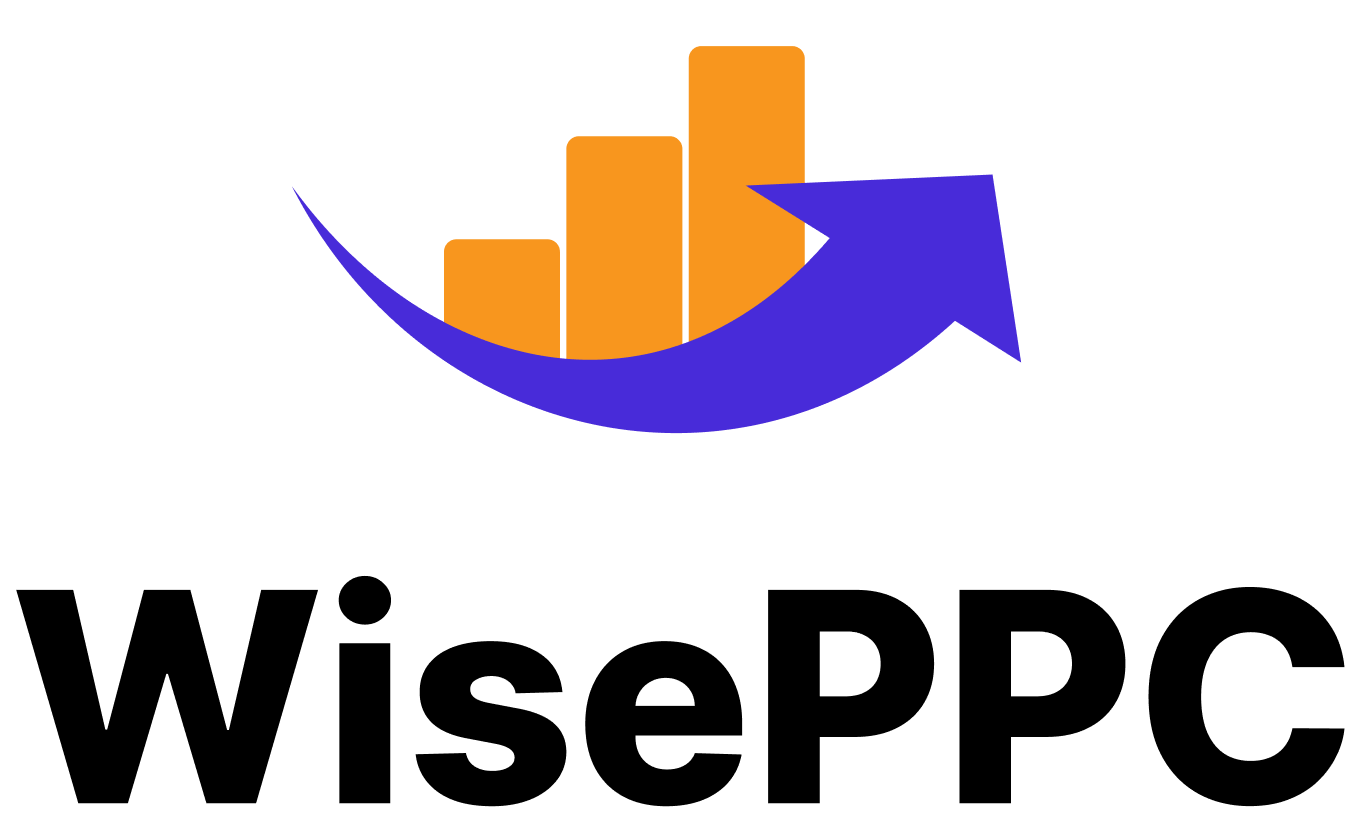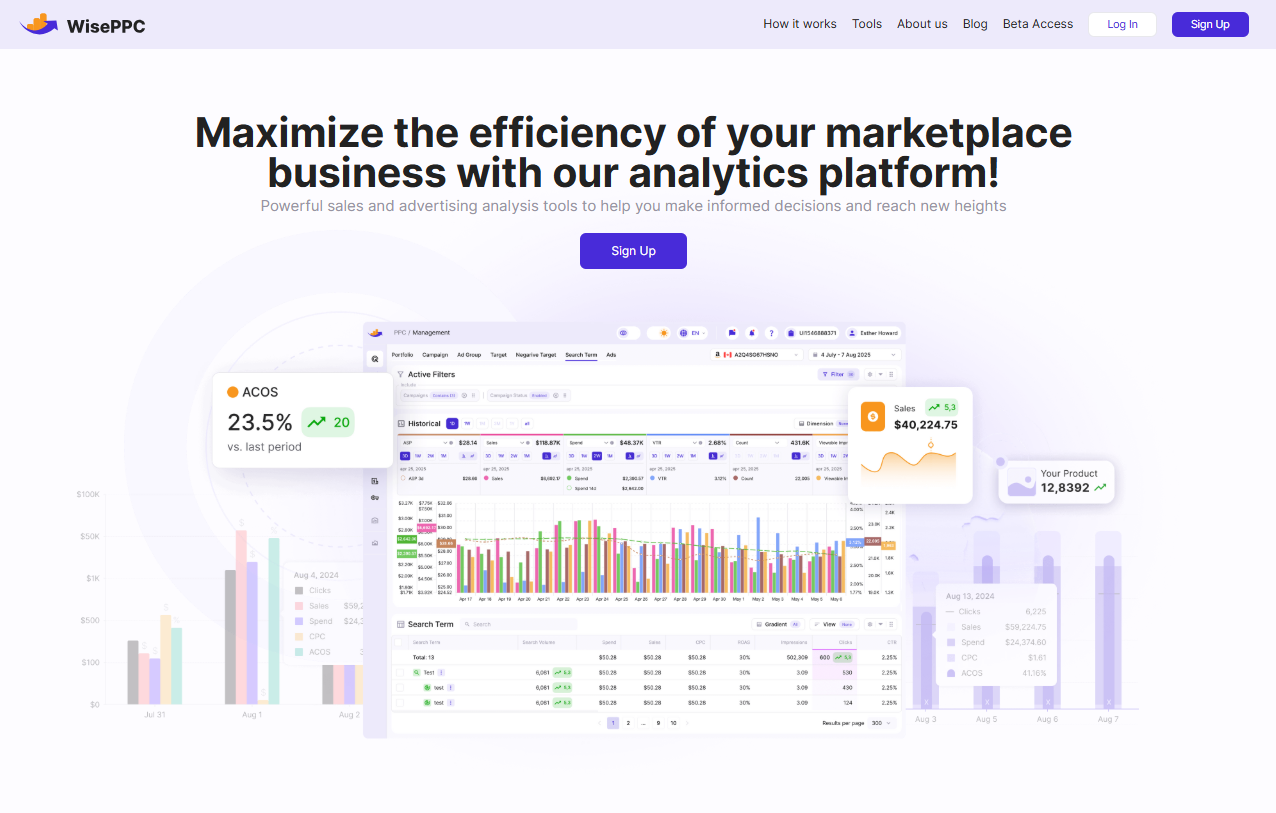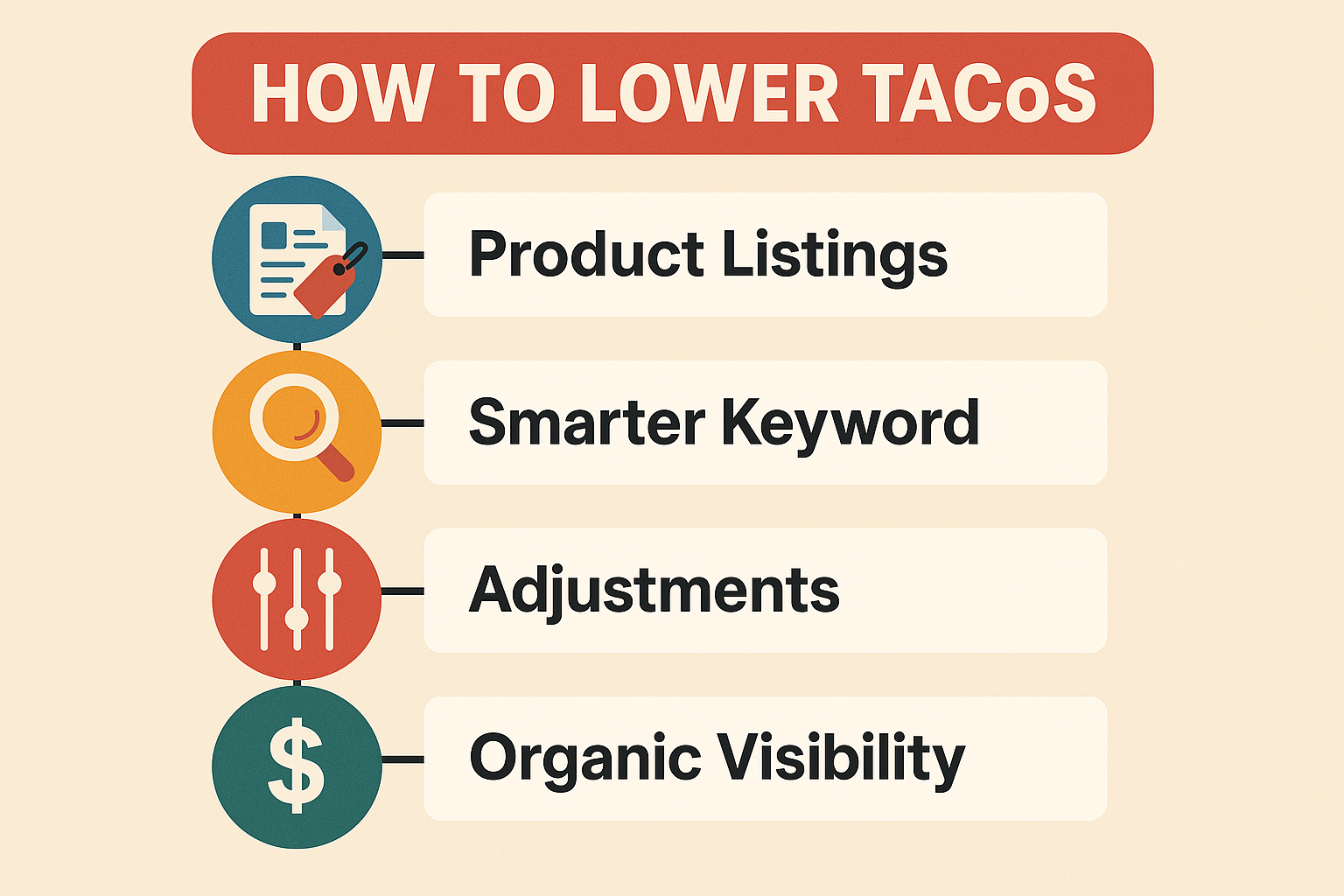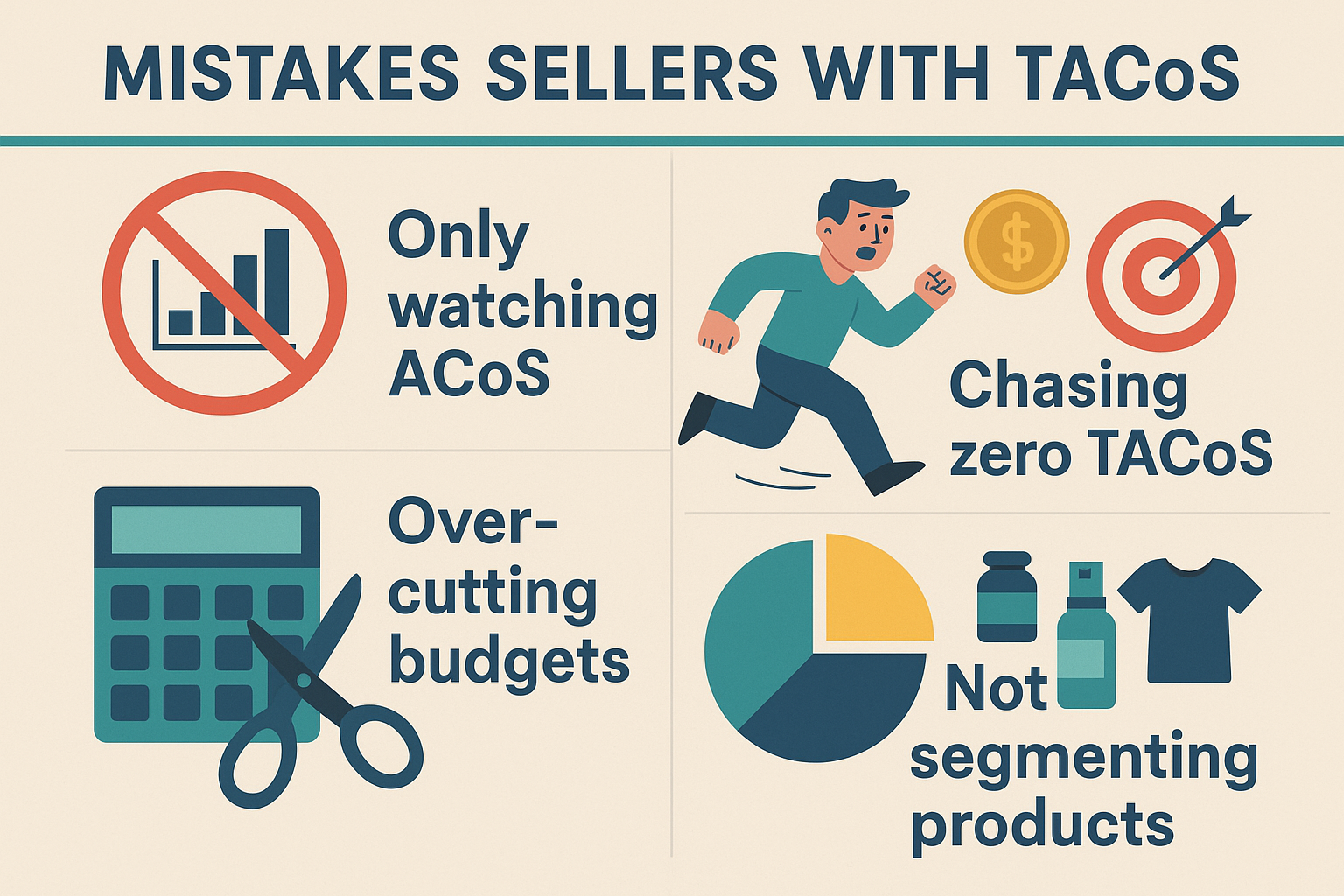What Is Amazon TACoS? A Clear Guide for Sellers
If you’ve been running ads on Amazon, you’ve probably heard people talk about TACoS. No, not the kind you eat, but the metric that shows how much your advertising really costs in relation to all your sales, not just the ones driven by ads. It’s one of those numbers that looks simple on paper but says a lot about how healthy your business is. In this article, we’ll break down what TACoS means, how to calculate it, and why it gives you a more complete picture than just watching ACoS alone.
Understanding TACoS
TACoS measures the ratio of your ad spend against your total revenue, which includes both ad-driven and organic sales.
The formula is straightforward:
TACoS = (Ad Spend ÷ Total Revenue) × 100
For example, imagine you spend $1,000 on ads. If your total revenue for that period is $10,000, your TACoS works out to 10 percent. But if your revenue drops to $5,000 while ad spend stays the same, your TACoS instantly doubles to 20 percent. That shift tells you something important: a higher share of your sales is now dependent on advertising.
This is why TACoS is so valuable. It’s not just another efficiency metric that shows how well ads are performing on their own. Instead, it reflects the relationship between advertising and your entire business. A low or stable TACoS suggests that ads are fueling growth without dominating your revenue stream, while a rising TACoS signals increasing reliance on paid traffic. In other words, this single number acts as both a performance check and a broader health indicator for your Amazon operation.

TACoS vs ACoS: The Key Difference
Most sellers start with ACoS (Advertising Cost of Sale) because it’s the easiest to grasp. The formula is simple:
ACoS = Ad Spend ÷ Ad Revenue
If you spend $500 on ads and make $2,000 in ad-attributed sales, your ACoS is 25%. That tells you how efficient your ad campaigns are at turning spend into sales.
But here’s the catch: ACoS only looks at the sales generated directly from ads. It ignores what happens next. If your ads push your product higher in search results and drive more organic visibility, those extra sales don’t show up in your ACoS number.
That’s where TACoS (Total Advertising Cost of Sale) comes in. TACoS measures:
TACoS = Ad Spend ÷ Total Revenue (Ad + Organic)
This broader formula shows how ads fit into the bigger picture of your Amazon business. Instead of just looking at what you spent to get a sale from an ad, TACoS reveals how your ad investment is helping your entire catalog grow.
Think of it this way:
- ACoS is narrow. It’s like checking how well one branch of the tree is growing.
- TACoS is wide. It looks at how the whole tree is benefiting from the sunlight and water you’re pouring in.
If you only track ACoS, you might shut down campaigns that look “expensive” because their direct return is weak. But those same campaigns could be improving your keyword rankings, lifting organic sales, and even strengthening your brand visibility. TACoS captures that ripple effect and helps you avoid cutting off growth too early.
Why TACoS Matters
Many sellers fall into the trap of chasing a “perfect” ACoS. They’ll celebrate a low number or panic over a high one without stopping to ask if it reflects what’s really happening in their business. The truth is, ACoS on its own can be misleading. TACoS steps in to give you a broader and more realistic perspective.
Here’s what it helps you see:
- Profitability after ads: TACoS looks at the relationship between ad spend and your total sales. If your TACoS is shrinking while revenue grows, it means ads are helping the business scale profitably. If it’s climbing, it could be a sign that ads are eating into margins or that organic growth isn’t keeping pace.
- Organic growth impact: One of the biggest reasons TACoS matters is its ability to highlight whether ads are boosting your organic rank. Ideally, ad-driven sales should feed into better search placement, more reviews, and stronger visibility, which then generate organic sales. If TACoS isn’t improving, it may mean your ads are not translating into long-term gains.
- Dependency on ads: TACoS also tells you how reliant your business is on constant ad spend. If you stopped running ads tomorrow, how much of your revenue would disappear? A lower TACoS often means your business has a healthier balance of organic and paid sales. A very high TACoS, on the other hand, can reveal that you’re essentially renting sales through ads rather than building a sustainable presence.
In other words, TACoS doesn’t just measure efficiency. It measures resilience. It shows whether your ads are fueling lasting growth or if they’re just a temporary engine that stalls the moment you pull back on spend. That’s why serious sellers look at TACoS as a north star for long-term strategy, not just as another number on a dashboard.
How We Use TACoS at WisePPC
At WisePPC, we look at TACoS as more than just another number in a spreadsheet. It’s a way to connect ad performance with the bigger story of how your business grows. That’s why our platform is built to track TACoS alongside other critical metrics like ACoS, CTR, profit, and organic sales.
Because we’re an Amazon Ads Verified Partner, we have direct integrations that let us pull in real-time data and highlight the exact factors driving your TACoS up or down. Instead of juggling reports or waiting days to see the impact of your campaigns, you can view changes instantly and act before wasted spend gets out of hand.
Some of the ways WisePPC makes TACoS analysis easier:
- Centralized analytics: All your ad and sales data in one clean dashboard, so you can see both paid and organic performance together.
- Bulk updates: Apply changes across thousands of campaigns or targets with just a few clicks, saving hours of manual work.
- Advanced filtering: Segment campaigns by cost type, bid strategy, or placement to spot patterns that affect TACoS.
- Long-term history: While Amazon only stores 60–90 days of data, we keep years of performance insights, making it easier to track trends and seasonality.
- Real-time alerts: See which campaigns are dragging your TACoS upward and which ones are driving sustainable growth.
For us, TACoS isn’t just about cost control. It’s about making smarter decisions: when to scale, when to pause, and how to build a business that isn’t 100% dependent on ads. By combining clear analytics with automation and actionable insights, WisePPC helps sellers cut wasted spend, grow faster, and keep TACoS moving in the right direction.
What Makes a “Good” TACoS and How Sales Cycles Affect It
There isn’t a single number that defines a “good” TACoS. The right range depends on your margins, product category, and growth goals. That said, most sellers find themselves aiming for single digits.
- 5-10% TACoS: A healthy target for established brands with steady organic traffic.
- 10-15% TACoS: Typical for sellers still scaling, where ads are doing more of the heavy lifting.
- Above 20% TACoS: Often a warning sign of heavy ad dependency or under-optimized listings.
On the flip side, a very low TACoS (1-2%) isn’t automatically a badge of honor. It can mean you’re leaving growth opportunities on the table by not investing enough in ads to defend rankings or expand reach.
Numbers alone don’t tell the whole story, though. TACoS also reflects the sales cycle between ads and organic rank:
- Positive cycle: Increased ad spend leads to more ad sales, which boost keyword rankings, which in turn generate more organic sales. As organic sales grow, TACoS trends downward.
- Negative cycle: Pulling back on ad spend cuts ad sales, lowers rankings, and reduces organic visibility. That loss of momentum often pushes TACoS higher and eats into profitability.
A “good” TACoS, then, isn’t just a percentage. It’s one that reflects a healthy cycle where ads spark organic growth instead of masking weak fundamentals. Knowing where you are in that cycle helps you decide whether to keep fueling ads or adjust strategy before profitability slips.
How to Lower TACoS
Lowering TACoS doesn’t just mean slashing ad spend. It’s about balancing efficiency and growth. Here are practical ways sellers reduce TACoS:
1. Optimize Product Listings
- Use high-quality images, clear titles, and keyword-rich descriptions.
- Add bullet points that highlight benefits, not just features.
- Encourage reviews to boost social proof.
A better listing means higher conversion rates, which reduces how much you need to spend on ads to drive sales.
2. Smarter Keyword Strategy
- Research winning keywords, not just high-volume ones.
- Add negative keywords to cut wasted clicks.
- Refine targeting to capture buyers closer to making a decision.
3. Campaign Adjustments
- Monitor bids and placements regularly.
- Shift budget toward campaigns with lower ACoS and proven conversions.
- Test Sponsored Products, Brands, and Display to see which mix works best.
4. Pricing and Promotions
- Use competitive pricing to improve conversion rates.
- Run limited-time coupons or Lightning Deals to spark volume and reviews.
5. Boost Organic Visibility
- Improve backend keywords and Amazon SEO.
- Keep listings updated with fresh content.
- Address Q&A and reviews to build trust.
When a Higher TACoS Is Okay
It’s easy to panic when TACoS starts climbing, but context matters. Not every increase is a bad sign. In fact, there are situations where a higher TACoS is both expected and strategic.
Take new product launches, for example. At the start, you’re relying almost entirely on ads to get eyes on your listing. Organic rankings don’t happen overnight, so TACoS will naturally spike. That investment is the cost of breaking into the market, and over time, if the product gains traction, organic sales should catch up and bring TACoS back down.
Seasonal events tell a similar story. During big shopping moments like Prime Day, Black Friday, or the holiday rush, ad spend tends to surge faster than organic sales. TACoS often rises in these windows, but sellers accept it because the trade-off is volume, visibility, and a chance to capture new customers who might buy again later without ads.
There are also times when the goal isn’t just to sell but to push competitors out of key positions. A deliberate market share grab usually requires aggressive ad spending, which inflates TACoS in the short run. While that can look inefficient on paper, the longer-term payoff is securing rank and building brand recognition.
The key is to know the difference between a healthy, intentional spike and one that signals inefficiency. If TACoS is high but aligned with your strategy: launching, seasonality, or competitive positioning, it’s not necessarily a problem. The danger comes when it stays elevated with no clear reason or without any sign of eventual payoff.
Common Mistakes Sellers Make With TACoS
TACoS is simple to calculate, but misinterpreting it can lead to costly decisions. Here are some of the pitfalls we see sellers run into:
- Only watching ACoS: Many sellers obsess over ACoS because it’s right there in the ad console, but ACoS alone doesn’t tell you whether ads are improving organic rank or building long-term profit. Ignoring TACoS can leave you thinking a campaign is failing when it’s actually fueling sustainable growth.
- Chasing zero TACoS: Lower isn’t always better. Some sellers try to drive TACoS as close to zero as possible, slashing ad budgets to save costs. The problem is that this often kills momentum, reduces visibility, and makes you vulnerable to competitors who are willing to invest. A healthy TACoS should balance profitability with growth, not eliminate ad spend altogether.
- Over-cutting budgets: Pulling back too aggressively when TACoS starts to creep up can backfire. Yes, trimming wasted spend is smart, but cutting campaigns too early can start a negative sales cycle where lower ad sales hurt rankings, which in turn reduces organic traffic. Recovering from that kind of drop can take months.
- Not segmenting products: Looking only at account-level TACoS hides the fact that different products perform differently. A hero product with strong reviews may run profitably at a lower TACoS, while a new launch will need a higher one to gain traction. Treating all products the same leads to poor resource allocation and missed opportunities.
In short, the mistakes come down to chasing short-term efficiency at the expense of long-term growth. Sellers who use TACoS effectively know it’s not about hitting one magic number but about reading the trend, understanding the context, and making adjustments that fit each stage of the product lifecycle.
Practical TACoS Benchmarks for Sellers
No two Amazon businesses look exactly alike, but having some reference points can make it easier to gauge whether your TACoS is headed in the right direction. While the exact percentage depends on your margins, category, and strategy, these ranges can serve as a practical framework:
0-5% TACoS
This usually signals a brand with strong organic presence, where the bulk of sales are happening without heavy ad support. While that may look ideal on the surface, there’s also a risk here: underinvesting in ads can make you vulnerable to competitors who are willing to spend. A very low TACoS might mean missed growth opportunities, especially in competitive niches.
5-10% TACoS
A sweet spot for many mature accounts. At this level, ads are contributing to growth without draining profitability. It often reflects a balanced strategy where organic rankings are stable, listings are optimized, and ad spend is being used strategically to defend positions or capture incremental traffic.
10-20% TACoS
Common for sellers in growth mode. Here, you’re using ads more aggressively to win rank, build review volume, and expand reach. Profit margins may be slimmer in the short term, but the long-term payoff is improved visibility and stronger organic sales. This range isn’t unhealthy—it just reflects a stage of investment.
20%+ TACoS
A clear sign to pause and evaluate. At this point, you may be overspending on ads relative to your revenue, or your listings aren’t converting well enough to support the spend. Sometimes it happens during a new launch, which can be fine if the goal is market share. But if it persists, it usually means you’re too dependent on ads and need to improve fundamentals like listing quality, pricing, or targeting.
The key is not to treat these numbers as rigid rules but as checkpoints. A TACoS of 15% might be perfect for a seller trying to scale, while the same number could raise concerns for a brand that should already be running profitably. What matters most is the trend over time—whether TACoS is stabilizing, creeping up, or gradually falling as organic sales grow.
Final Thoughts
TACoS is one of those metrics that doesn’t just tell you how your ads are doing, but how your entire Amazon business is performing. It highlights whether your ad dollars are building long-term growth or just buying short-term clicks.
Smart sellers use ACoS to fine-tune campaigns, but they use TACoS to steer the bigger picture. If you track it regularly, spot the trends, and adjust your strategy, TACoS can be the difference between running campaigns that look good on paper and running a business that actually grows.
Frequently Asked Questions
What does TACoS stand for on Amazon?
TACoS stands for Total Advertising Cost of Sale. It measures your ad spend as a percentage of your total revenue, including both ad-attributed sales and organic sales.
How is TACoS different from ACoS?
ACoS only looks at ad spend compared to ad-driven sales, while TACoS takes all sales into account. ACoS tells you how efficient your campaigns are, but TACoS shows how advertising impacts your entire business.
What is a good TACoS percentage?
There’s no universal “good” number, but many sellers aim to keep TACoS in the single digits once their products are established. Five to ten percent is often seen as healthy, while ten to fifteen percent is common during growth phases. Anything above twenty percent usually means ads are carrying too much of the load.
Why does my TACoS keep going up?
An increasing TACoS can mean you’re spending more on ads without a matching increase in total sales. It may also signal that organic sales are slipping, making you more dependent on advertising. Sometimes, though, a higher TACoS is normal, such as during a new product launch or a seasonal sales push.
Can TACoS be too low?
Yes. While low TACoS suggests you’re not heavily reliant on ads, it could also mean you’re under-investing in campaigns that could drive growth or defend your rankings against competitors.
How often should I track TACoS?
It’s best to monitor TACoS regularly, at least weekly. Watching the trend over time is more useful than reacting to a single data point, since short-term changes in sales or spend can cause temporary spikes or dips.
Join the WisePPC Beta and Get Exclusive Access Benefits
WisePPC is now in beta — and we’re inviting a limited number of early users to join. As a beta tester, you'll get free access, lifetime perks, and a chance to help shape the product — from an Amazon Ads Verified Partner you can trust.
 No credit card required
No credit card required
 Free in beta and free extra month free after release
Free in beta and free extra month free after release
 25% off for life — limited beta offer
25% off for life — limited beta offer
 Access metrics Amazon Ads won’t show you
Access metrics Amazon Ads won’t show you
 Be part of shaping the product with your feedback
Be part of shaping the product with your feedback






